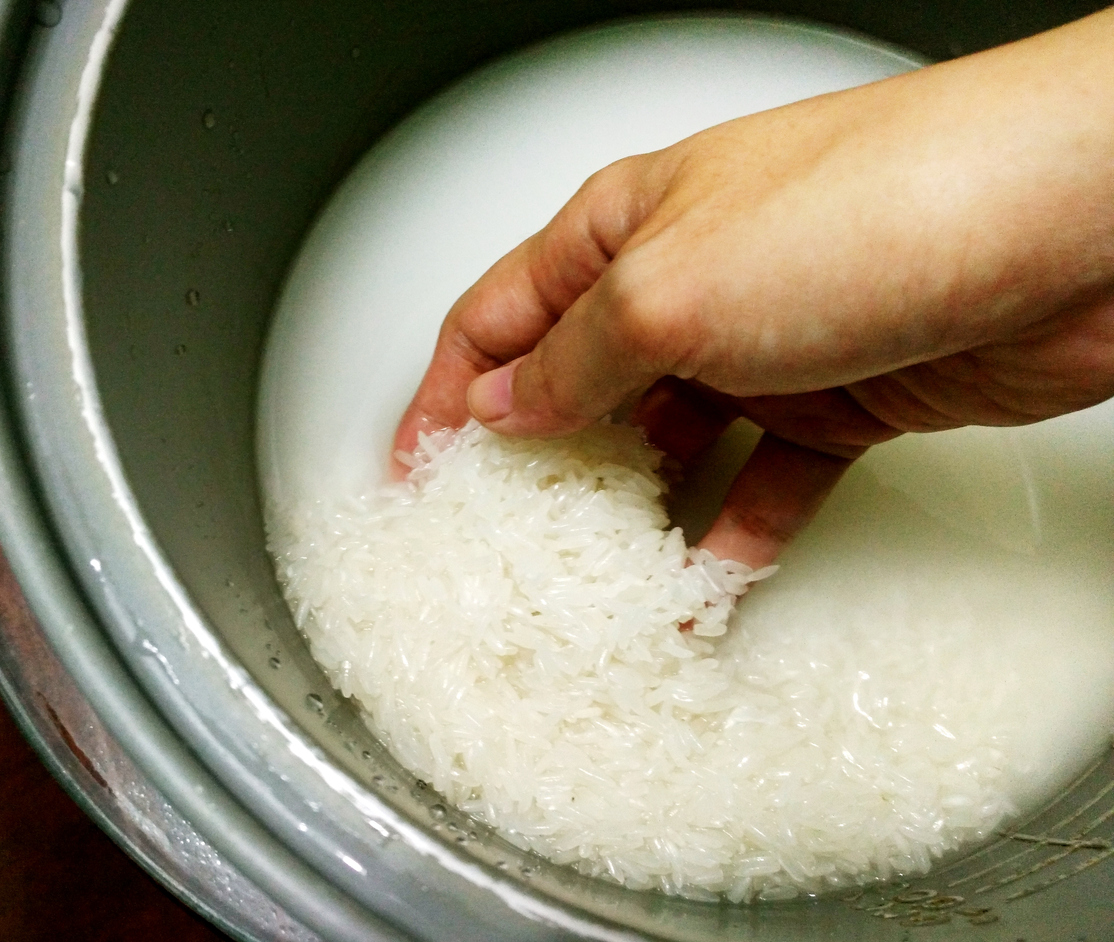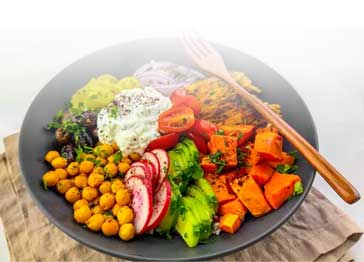Mediterranean rice has always been more than just a side dish to me — it’s a connection to tradition, comfort, and bold, wholesome flavors. In this guide, I’ll walk you through the essentials of choosing the right rice, cooking it to perfection, and infusing it with the vibrant ingredients that define the Mediterranean way of eating. Get ready to explore the flavors, history, and simple joy behind every spoonful of this timeless staple.
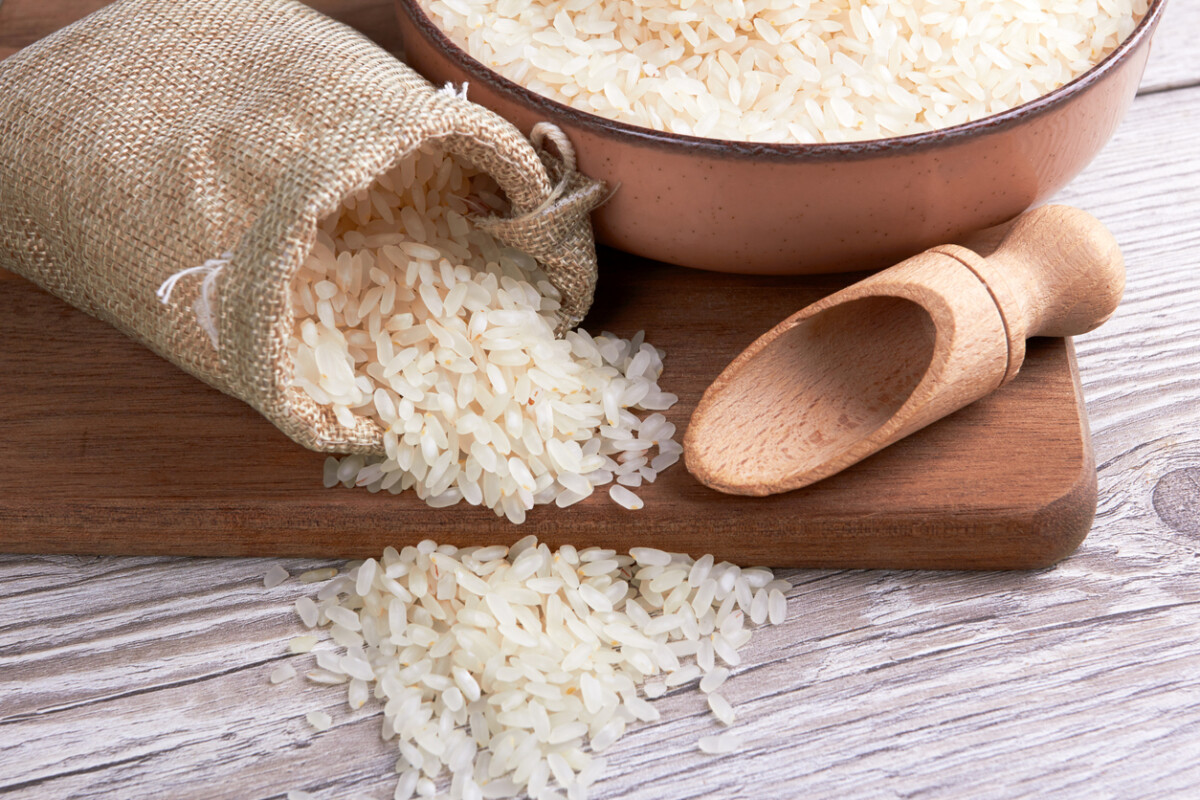
In the vibrant tapestry of Mediterranean cuisine, rice has earned its place as more than just a grain — it’s a symbol of comfort, heritage, and everyday nourishment. Mediterranean rice, in particular, tells a story that spans centuries, journeying from distant lands into kitchens where it became a trusted staple, adaptable to countless dishes across cultures.
For me — and likely for many of you — rice is more than a side dish. It’s a constant at the table, a ritual that’s passed down through generations. Growing up, rice wasn’t just the backdrop to a meal. It was the centerpiece. Second only to bread, it held a sacred place in every dinner spread as a dependable source of comfort and satisfaction.
Introduced to the region through waves of cultural exchange, rice became the blank canvas for Mediterranean cooks: paired with vegetables, meats, broths, and fragrant spices to create nourishing, flavorful meals. It’s this balance of simplicity and versatility that makes Mediterranean rice so timeless.
Though there are thousands of rice varieties around the world, Mediterranean cooks often focus on one key distinction — grain size. Whether it’s long-grain for fluffy pilafs, medium-grain for saucy dishes, or short-grain for creamy textures, the type of rice you choose can define both the texture and soul of the dish.

Rice with vermicelli is a traditional Mediterranean rice dish.
Long-Grain Rice: Light, Fluffy, and Perfect for Mediterranean Dishes
Long-grain rice is a favorite in Mediterranean kitchens for its light texture and ability to stay separate when cooked, perfect for pilafs, bowls, and rice-based side dishes. Two types I always keep in my pantry are Basmati and Jasmine rice. I’ve been cooking with both since I was a teenager, and they’ve never failed me when I want fragrant, flavorful results.
Basmati rice has long, slender grains and a naturally nutty aroma. It’s especially popular in Middle Eastern and Indian cooking, and works beautifully in Mediterranean dishes like Greek Lemon Rice, Lebanese Hashweh, or Mujadara. I usually soak it for 20–30 minutes to help elongate the grains, then cook it with a 1:2 rice-to-water ratio. Simmering for 15–20 minutes gives me fluffy, aromatic rice, with about 3 cups of cooked rice per 1 cup dry.
Jasmine rice, on the other hand, has a slightly softer and more floral character. It’s often used in Southeast Asian dishes, but I love pairing it with Mediterranean flavors — especially in vegetable pilafs or shrimp dishes. It cooks a little quicker, with a 1:1 rice-to-water ratio, and benefits from rinsing to remove excess starch. After simmering for 15–20 minutes, it becomes slightly sticky but beautifully fragrant, yielding about 3 cups cooked per cup of dry rice.
Both varieties are excellent foundations for building a flavorful Mediterranean meal, whether you’re serving roasted vegetables, grilled meats, or spiced stews on top.

Avgolemono is a Greek chicken, rice lemon soup.
While long-grain rice varieties share similar characteristics — like a light, fluffy texture — the cooking methods can vary slightly depending on the type. For instance, Basmati rice benefits from soaking before cooking to enhance elongation and reduce breakage. Jasmine rice, with its naturally soft and slightly sticky texture, should be rinsed well to remove excess starch and produce a fluffier finish.
Even American long-grain rice, known for its clean, separated grains, may follow a slightly different method, usually a straightforward boil and simmer without soaking. For best results, I always recommend checking the instructions on your rice packaging, since brands may adjust cooking times or ratios based on the specific processing of their grains.
Medium-Grain Rice: Tender, Flavor-Absorbing, and Perfectly Adaptable
Medium-grain rice strikes a beautiful balance between softness and starch, making it ideal for dishes where texture and flavor absorption are key. It’s slightly more tender and moist than long-grain varieties, which allows it to adapt to a wide variety of Mediterranean-inspired recipes.
Two standout types are Calrose and Arborio rice.
Calrose rice, popular in Mediterranean, Asian, and Middle Eastern cooking, has a soft, slightly sticky texture that’s perfect for stuffed vegetables like bell peppers, grape leaves, or cabbage rolls.
Arborio rice, widely known in Italian cuisine, is the go-to for risotto, thanks to its ability to absorb broth while releasing starch, resulting in a rich, creamy consistency that still holds a tender bite.
For the best texture and flavor, I recommend trusted brands like Lundberg Family Farms, Botan, or Riso Scotti — especially if you’re new to cooking medium-grain rice and want consistently good results.
Whether you’re spooning risotto into a bowl or stuffing veggies with rice and herbs, medium-grain rice is incredibly versatile and ideal for Mediterranean comfort food.
Cooking Tips for Medium-Grain Rice
-
Rice-to-Water Ratio: 1:1.5 to 1:2
-
Rinsing: Optional — rinse if you want less stickiness
-
Cooking Time: Slightly shorter than long-grain (15–18 minutes)
-
Texture: Moist and tender
-
Final Yield: ~2.5 to 3 cups cooked per 1 cup raw rice
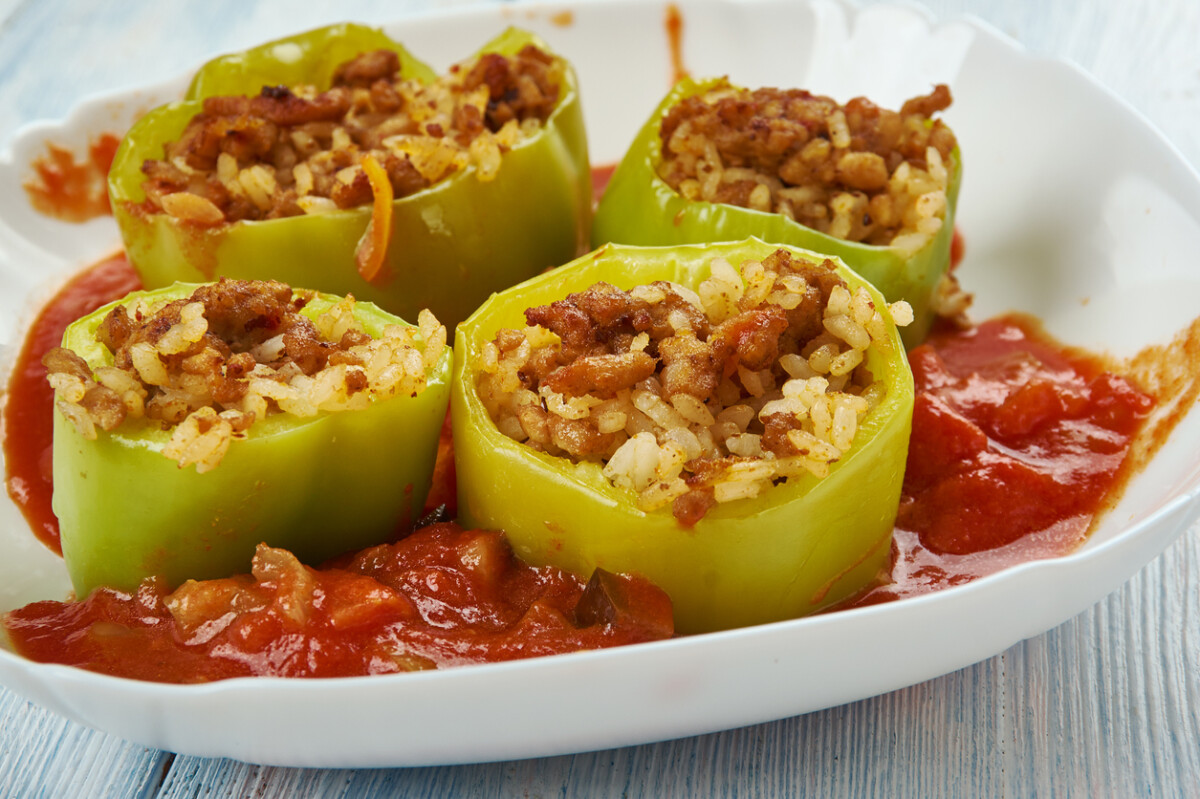
Stuffed Peppers, a delicious Middle Eastern dish
Example Dishes Using Medium-Grain Rice
- Mediterranean Rice Pilaf
A savory, comforting dish where medium-grain rice is simmered in broth with sautéed vegetables, warm spices, and herbs like parsley or dill. The rice absorbs the flavors beautifully while staying moist and tender. - Creamy Rice Pudding
A beloved Mediterranean dessert made by slowly cooking medium-grain rice in milk with sugar, cinnamon, or orange blossom water. It’s natural starchiness creates a thick, velvety texture. - Stuffed Vegetables (Dolma or Mahshi)
Medium-grain rice is ideal for stuffing zucchini, grape leaves, or bell peppers. Its slight stickiness helps the filling bind together while absorbing the savory flavors of spices, tomatoes, and olive oil.
Short-Grain Rice: Creamy, Sticky, and Comforting
Short-grain rice is known for its plump, round grains and its naturally sticky texture when cooked. This stickiness makes it ideal for dishes that require a creamy consistency or where the grains need to hold together, like risotto, sushi, and stuffed vegetables.
One of the most popular short-grain varieties is Arborio rice, the star of creamy Italian risottos. Thanks to its high starch content, Arborio creates a luscious, velvety texture that soaks up broth and flavor beautifully — a technique also embraced in Mediterranean comfort dishes.
Short-grain rice is also commonly used in dishes like stuffed bell peppers and grape leaves, where the sticky texture helps bind the rice filling and deliver a satisfying, cohesive bite. And although more common in Japanese cuisine, sushi rice (also a short-grain variety) shares this same texture profile, making it another versatile grain in global and Mediterranean-inspired kitchens.
For quality, look for trusted brands like Nishiki, Kokuho Rose, or Riso Scotti for Arborio.
Cooking Tips for Short-Grain Rice
-
Rice-to-Water Ratio: 1:2
-
Technique: Simmer gently with occasional stirring to release starch and create a soft, sticky texture
-
Cooking Time: 15–20 minutes
-
Texture: Creamy or sticky, depending on use
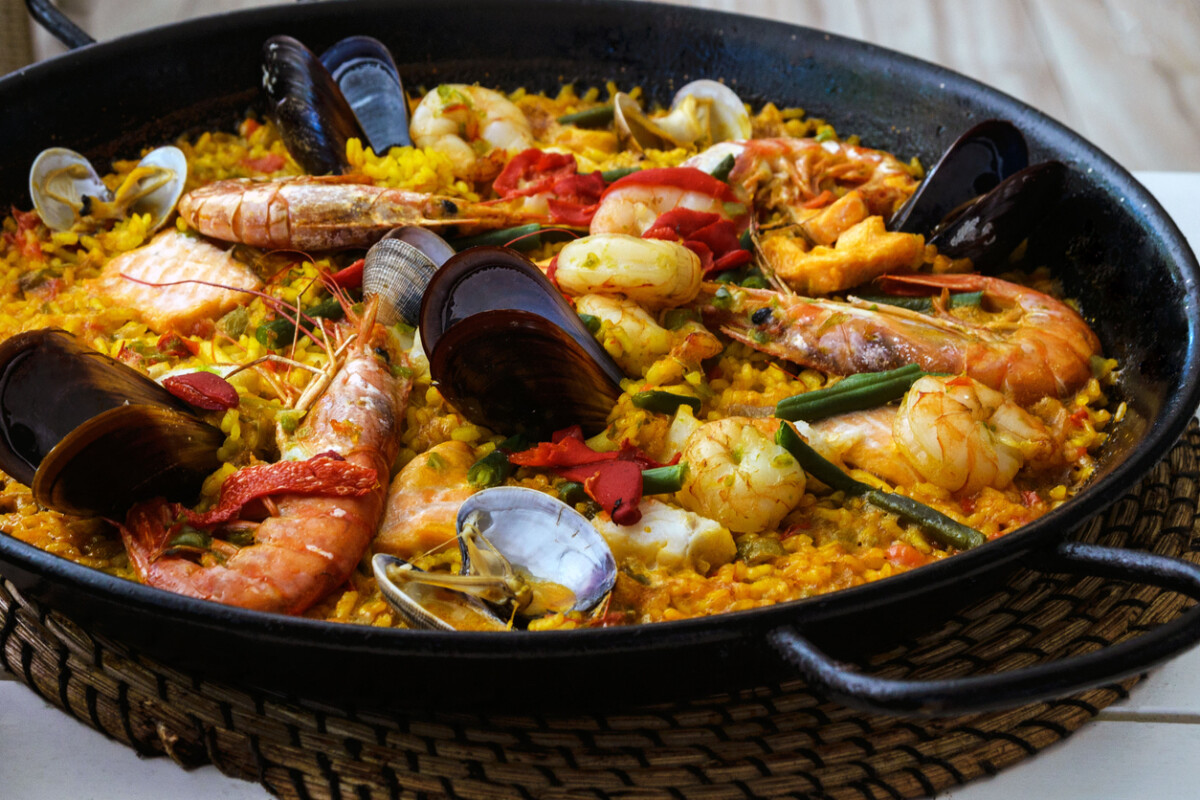
Traditional Spanish seafood paella dish.
Example Dishes Using Short-Grain Rice
Let’s talk about the magic short-grain rice brings to the kitchen — it’s truly a transformative ingredient. These are two of my favorite ways to let it shine:
- Creamy Risotto
Short-grain rice is essential for classic risotto. Its ability to absorb liquid while slowly releasing starch gives risotto its signature creamy texture. Whether made with mushrooms, seafood, or a splash of white wine, this Italian favorite is always a showstopper in both taste and technique. - Spinach Paella
This Mediterranean twist on traditional paella is one of my personal favorites. Short-grain rice forms the flavorful base, soaking up the essence of garlic, herbs, and spices while holding its structure beautifully. It’s hearty, aromatic, and perfect for a meatless main or vibrant side dish.
Rice’s Nutritional Role in the Mediterranean Diet
In the vibrant palette of the Mediterranean diet, rice plays a central role, contributing to meals that are both balanced and nourishing. As a key source of complex carbohydrates, rice offers steady energy, perfectly aligned with the active, wholesome lifestyle typical of the Mediterranean region.
Brown rice stands out for its fiber-rich content, supporting digestive health and helping with weight management. Even white rice, when paired with other Mediterranean staples like vegetables, legumes, and olive oil, becomes part of a well-rounded, nutrient-dense meal.
Rice also provides important nutrients like B vitamins, iron, and magnesium, supporting overall wellness and energy metabolism. And since rice is naturally gluten-free, it’s a flexible option for people with dietary restrictions or sensitivities.
Moderation is a cornerstone of the Mediterranean diet, and rice fits in beautifully — whether it’s adding comfort to an Italian risotto, richness to a Spanish paella, or substance to a Greek pilaf. Combined with heart-healthy fats like olive oil and an abundance of herbs and vegetables, rice transforms from a simple grain into a foundation for mindful, flavorful eating.
In every grain, there’s more than nourishment — there’s tradition, balance, and a celebration of real food.



